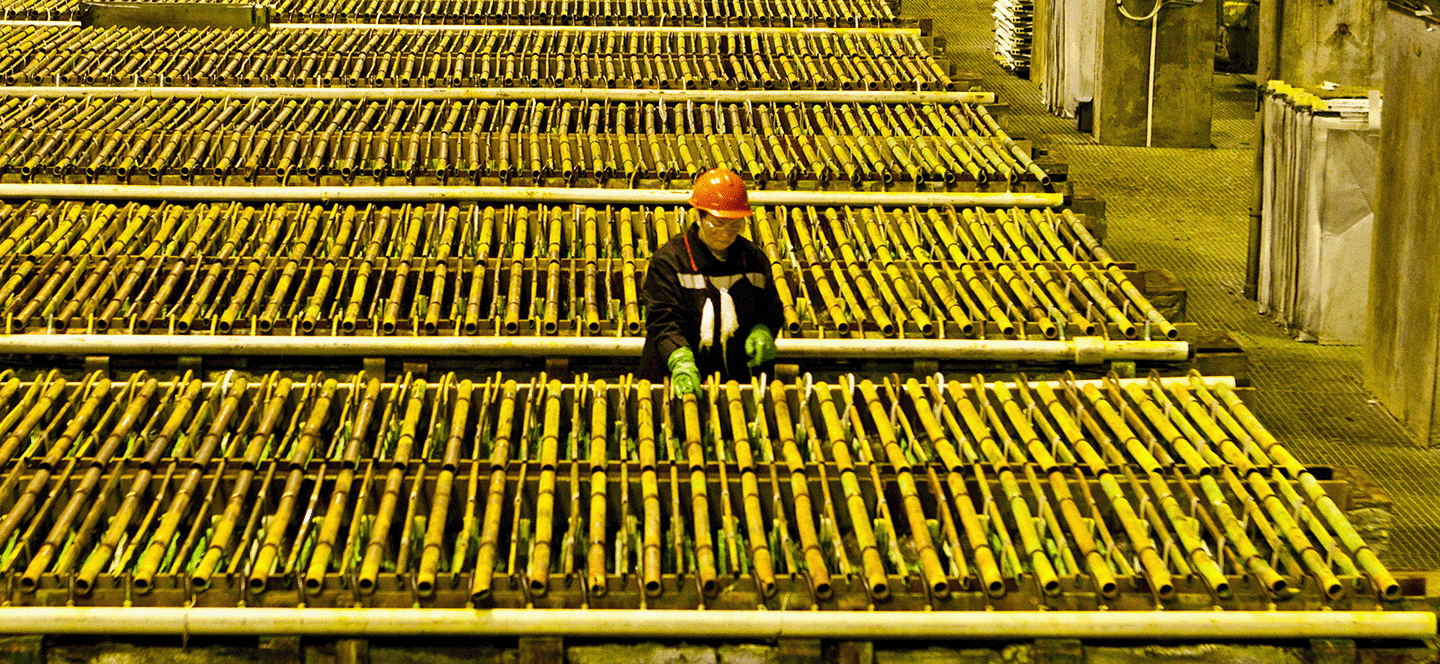Key figuresAll intensity metrics are per RUB million of revenue under consolidated IFRS financial statement disclosures.
Labour practices

Employment and social support for employees
The launch of the Sulphur Project at Nadezhda Metallurgical Plant, along with the start of other projects, significantly contributed to headcount growth in 2023. The year‑on‑year decrease in 2024 was driven by the Company’s investment strategy, efficiency improvement programme, and organisational and technical changes.
In 2024, employee salaries were increased by 10% to reflect the cost‑of‑living adjustment. The Company’s average monthly salary stands at RUB 207 thousand – 2.1 times the national average.
Employee turnover remains in line with industry benchmarks. The 1 p. p. y‑o‑y increase was due to the Company’s ongoing efficiency initiatives.
Nornickel respects the right of employees to enter into collective bargaining agreements, some of which were updated in 2024. Most of the Group’s workforce is covered by these agreements.
In 2024, spending on social programmes and benefits totalled 1.4% of the Group’s revenue. Travel expenses and baggage fees (22.1%), health resort treatment (15.1%), and VHI (13.4%) accounted for the largest share of total expenses.

Occupational health and safety
The Company continues to strengthen its system for recording, classifying, and investigating incidents. In 2024, the Company achieved an all‑time low fatal injury frequency rate (FIFR).
The largest share of health and safety expenses came from the provision of personal protective equipment (PPE). Changes in this indicator, among other things, depend on the number and type of actual and planned activities to improve the H&S system during the reporting period.
Human capital development
The employee engagement rate at Nornickel is in line with the industry. A slight decrease in 2024 was due to elevated uncertainty, resulting in respondents’ cautious answers in assessing prospects.
In the reporting year, Nornickel further enhanced its training ecosystem and recorded an increase in training volumes, which was due, among other things, to both regulatory changes and the transformation of a manager’s role within the Company.
Environment
Climate change
GHG emissions (Scope 1 and 2) decreased year‑on‑year. The change in emissions intensity between 2023 and 2024 was largely due to lower Group revenue.
Key drivers behind the changes in Scope 3 (downstream) emissions in 2024 included changes in the Group’s sales volumes, product mix, and customer portfolio, as well as the geographical distribution of sales.
In 2024, the Company made further progress on its projects to ramp up the use of renewables, achieve energy savings, and improve the reliability of electricity and gas supplies.

Air
Air pollutant emissions were reduced by 23.5% following the launch of two process lines under the Sulphur Project for comprehensive testing: the recovery rate for sulphur dioxide emissions from Nadezhda Metallurgical Plant reached 99.1% (390 kt recovered). Importantly, the Company achieved this record reduction in emissions while maintaining output close to 2023 levels. Changes in emissions intensity were largely driven by the decline in emissions volumes.
Waste
No significant year‑on‑year changes in waste generation were recorded in 2024.
In order to increase its waste recovery, Nornickel implements in‑house projects to process construction waste into certified crushed stone, sort waste in Monchegorsk, and transfer waste to third parties for recovery.
Water use
In 2024, total water withdrawal grew by 6 Mcm y‑o‑y. The Company runs regular monitoring programmes for water bodies and water protection zones at all operational sites where water is used.
Nornickel’s key production facilities operate closed‑loop water systems to make sure water withdrawal levels remain fairly low.
Contribution to the development of regions and local communities
In 2024, charitable expenses totalled 1.2% of Group revenue for the year.
Changes in the tax and non‑tax payments for 2024 were due to lower Group revenue.
In 2024, Nornickel wrapped up its Programme for Promoting Social and Economic Development of the Taimyrsky Dolgano‑Nenetsky Municipal District in 2020–2024, having fully delivered the committed RUB 2 billion in funding. In 2025, Nornickel plans to advance efforts across its key strategic focus areas for engagement with indigenous peoples.

Governance
The Company’s Board of Directors is well‑balanced in terms of independence and gender, contributing to effective decision making that takes into account the interests of a wide range of stakeholders and aligns with both national and international best practices.
Operational performanceGroup data, including foreign companies of the Polar Division.
The change in revenue trend in 2024 was driven by lower market prices for nickel and platinum group metals.

Throughout 2024, Nornickel implemented a range of operational excellence initiatives. As a result, the Company exceeded its production guidance for all key metals, outperforming its 2024 production targets.